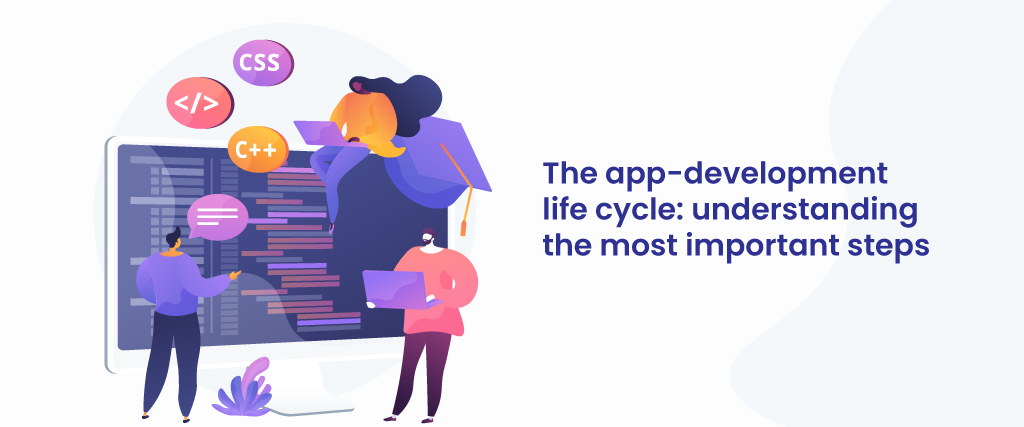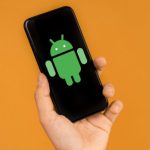App Development Life Cycle: Mobile is a booming field that draws companies from every ecosystem. No wonder, in 2021, mobile app sales are expected to hit over $600 billion.
The growing proliferation of smartphones and tablets has made the production of mobile apps an increasingly popular practice among company owners around the world.
A mobile app is a type of program that is optimized to function on a mobile device which may be a smartphone or tablet computer.
They also manage to provide customers with premium features and interactions, even though apps are typically small software units with minimal functionality.
App Development Life Cycle, But why shall you consider getting a mobile app?
Well, you might find it a reasonable choice after considering these reasons.
- Mobile applications account for more than 50 percent of digital media use.
- Ninety percent of the time that smartphone users devote to their phones goes to mobile apps;
- An average user has about 30 applications built on his smartphone and uses them for more than 35 hours per month;
- Forty-two percent of smartphone transactions from mobile apps were completed;
- Native smartphone applications are preferred by eighty-five percent of users over a mobile website.
It is important to imagine the full spectrum of stages and processes to go through before deciding on creating a smartphone app.
According to The Yugasa‘s mobile app applications strategy, the life cycle of a traditional application project, no matter the difficulty, is here:
- Planning stage (including project manager, marketer, and business analyst)-conducting business research and mobile strategy development.
- Technical documentation, explaining all technical specifications and information (covered by the technical writer).
- Prototyping (usually created by a UX/UI designer)-upon consent to build the sketch, wireframes, prototype, and final software skins.
- Creation of front-end and back-end segments of coding (performed by the developers).
- Quality Testing Systems (usually performed continuously after each agile sprint is completed; followed by bug fixing) Checking of technical specifications, compliance with the system, interface, security aspects, etc.
- Maintenance & Publishing (covered by DevOps) Publishing in the app store, launches of patches, infrastructure, and repair of the whole app.
Phases of Planning – App Development Life Cycle
1. Business Analysis
- Idea review is a preliminary stage in which experts analyze the idea, correct it, offer guidance, and establish a rough logic for it.
- Analysis of competition: analysis of the practices of other industry competitors.
- SWOT-analysis: review of the product’s strengths and disadvantages, insights into prospects, and other factors.
- ROI calculation: Estimation of the potential success of the app industry helps to understand the actual benefit and change the budget accordingly.
- Scope of specifications, summing up requirements at all stages for the upcoming product.
2. Mobile Strategy
- The market research-This analysis illustrates the general market position to better adapt the product idea to actual demand.
- In crafting an advertisement strategy, it is important to identify consumer personas-understanding who the target audience is.
- Evaluation of technology & resources-the analysis of particular tools needed by the industry and the development of a range of technologies to fulfill the project objectives.
- Complex promotion strategy: a step-by-step user growth and retention action plan.
3. Technical Documentation – App Development Life Cycle
This report, also known as a technical specification or software documentation, is a complicated product manual that describes specifications, business theory and leads the experts through all phases of the project:
- It makes the apps universally comprehensible.
- Provides for future improvements with versatility.
- Providing a simple manual brings value to the app.
- Helps to keep your goods under control.
- Enables the reuse of current parts of the application being built.
4. Prototyping
Prototyping is a method of visually identifying an idea and determining how the app might adapt to address a misunderstanding.
- The draft version of your app on paper, which sets out the core logic, the number of screens, and how they communicate with each other, produces a sketch.
- The simulation of the draft framework is provided by constructing wireframes.
- The development of a clickable concept allows to define and evaluate all potential use cases, to explore the initial premise of conceptual breaks and technological contradictions.
- Designing app skins, compiling and bringing all wireframes together to get the final creation.
5. Code Development
This phase consists mainly of two parts:
- Front-end development: development on the client-side, building a software presentation layer for direct user interaction with it.
- Back-end development, linking a front-end component of the smartphone app to the data access layer, a server/database part of development.
6. Quality Assurance – App Development Life Cycle
It is normally a continuous process in agile development, following any sprint of growth:
- Checking of compatibility-running the software on multiple platforms and screen sizes.
- Testing the interface-checking output of the navigation, menu, and buttons.
- Compatibility testing of devices: checking how the software looks and works on different screen sizes.
- Low-level checking of resources: a review of the software in low battery levels, weak internet connectivity, etc.
- Security testing-provides users’ data security and quality assurance.
- Beta research, providing consumers with access to the app to collect input.
7. Publishing and Maintenance
- Publishing the app and future copies of the upgrade to the selected app store.
- Help with infrastructure-you would need to make sure it runs entirely, whether you have an admin panel to write on or a cloud server attached.
- Optimization of the App Store lets the app climb to the top of search lists and attract more customers in this manner.
If you still find this process too hard, don’t worry, we got your back. Contact us to get the best quotes for your app today!
Read More: A GUIDE TO BACKEND DEVELOPMENT FOR MOBILE APPS
























